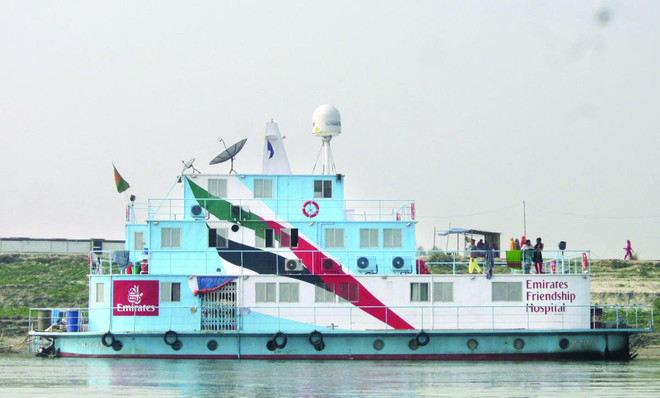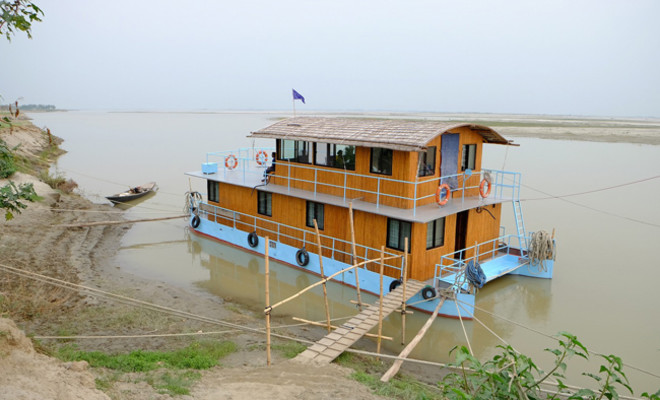When will we have a BRT?
Other development projects overlap Bus Rapid Transit route, construction cost doubles
The average traffic speed in Dhaka is now only 7km per hour, according to recent data from World Bank. A BRT bus, however, could operate at 25km/h along the suggested routes.
So why has Bangladesh not succeeded in developing a BRT system to ease the pain of commuters in Dhaka?
Many other major cities in the world have Bus Rapid Transit (BRT) systems including Delhi, Bangkok, Jakarta and Shanghai. Rio de Janeiro opened its BRT system for the 2016 Olympic Games last summer.

A BRT system can ensure a smooth and comfortable journey since the buses run within dedicated corridors through the middle of the road, with little scope for congestion as other vehicles are denied access.
Buses can drive through without any interruption and BRT buses can even be given priority when passing through intersections. Commuters can catch BRT buses from dedicated stations by paying in advance through smart cards.
BRT projects are cheaper than building new flyovers or highways because they involve limited construction and are normally based on existing routes.
Bangladesh had planned to build three BRT systems around 20 years ago to improve Dhaka’s traffic system and reduce emissions, but now the authorities say they will build only two BRT routes due to a shortage of space on existing roads.
The first route will be constructed along a 42km stretch between Shibbari in Gazipur and Jhilmil near Keraniganj in Dhaka. Another 36km line will be built on the capital’s eastern edge, according to the Revised Strategic Transport Plan (RSTP).
The 42km project, called BRT line 3, was launched by the Road Transport and Bridges Ministry in 2010 but its progress is currently below 5% and the civil work is yet to start. It will be implemented in two parts: from Gazipur to Dhaka airport (20km); and from the airport to Keraniganj (22km).
The cost of the Gazipur and Airport part has been set at Tk2,040 crore and the Airport to Jhilmil section at Tk4,747 crore. The total cost for BRT line 3 of Tk6,787 crore is more than double the initial estimated cost of Tk3,034 crore.
Officials from the Road Transport and Highways Division and officials involved in the project say the major cause of rising costs are loopholes in the preliminary design, three revisions of the design due to overlap with other projects, and negligence of the implementing authorities.
However, MAN Siddique, secretary of the Road Transport and Highways Division, told the Dhaka Tribune: “We have no experience building a BRT, but we have already overcome the challenges. Hopefully the project will be implemented by 2019 as per plan.”
Progress of Gazipur-Airport section
Land development work for a depot for the BRT line 3 project started late last year and is still ongoing by a local firm, nearly four years after Prime Minister Sheikh Hasina laid its foundation stone on October 31, 2013. The PM inaugurated the construction work on July 26, 2016.
The Roads and Highways Department signed a Tk2,040 crore deal with China Gezhouba Group No 6 Engineering Co Ltd on December 1, 2016, for the building of Line 3 including a 16km road corridor, flyovers and 25 stations. In addition, the Bridges Division will build a 4km flyover at Tongi for a further Tk855 crore.
The Asian Development Bank, France Development Agency and Global Environmental Facility will finance the project.
“Under the project we will build six flyovers, 32km of footpaths, a depot in Gazipur and an eight-lane bridge over the Tongi river, which has raised the cost,” BRT (Gazipur-Airport) Project Director AQM Ikram Ullah said.
“The BRT will also need 48 hectares of land to develop the depot. While most of it is public land, Tk1,107 crore has been spent to acquire the rest, with a rehabilitation cost of Tk268 crore.”
Articulated buses will run on the BRT at a cost of Tk392.4 crore.
Prof Shamsul Hoque of Buet’s department of civil engineering said there is no need to build a separate infrastructure for BRT.
“Building two dividers on the existing roads would have sufficed. Even land would not have been necessary,” he said. “All that would be necessary would be some stopping points for the passengers. Also, the traffic light system should be upgraded to prioritise the BRT system.”
Progress of Airport-Jhilmil section
The project authority says Dhaka South is more congested than the north and so this is a challenge for the second phase of the BRT line 3 project. The draft design was changed three times, delaying its completion and raising the cost twice from an initial Tk2,747 crore to the current figure of Tk4,747 crore.
As per the design – which has been funded by the World Bank – the main bus corridor, intersection modification, 16 stations, underpasses, box culverts and bridges will cost a combined Tk1,019 crore. The cost for feeder roads, drainage and footpaths has been set at Tk488 crore.
Mohakhali terminal reconstruction and bus depot construction cost is Tk1,163 crore. Keraniganj bus depot cost is Tk132.5 crore. BRT transportation system cost is Tk163 crore. The cost of automated fare collection and ticketing system is Tk52 crore.
The Shantinagar-Keraniganj flyover is not in the RSTP, but Rajuk is implementing the project which has become another major block for the BRT route. As a result the project authorities are trying to redesign the route, which may now end at Mohakhali.
“The project authority’s thought for an alternative is that if the BRT is finally built between Gazipur to Mohakhali instead of Keraniganj, the authority will install two shuttle bus services from Mohakhali bus terminal to Farmgate and another from the terminal to Gulistan,” PD Anisur Rahman said.
http://www.dhakatribune.com/bangladesh/development/2017/08/18/when-will-we-have-a-brt/






































